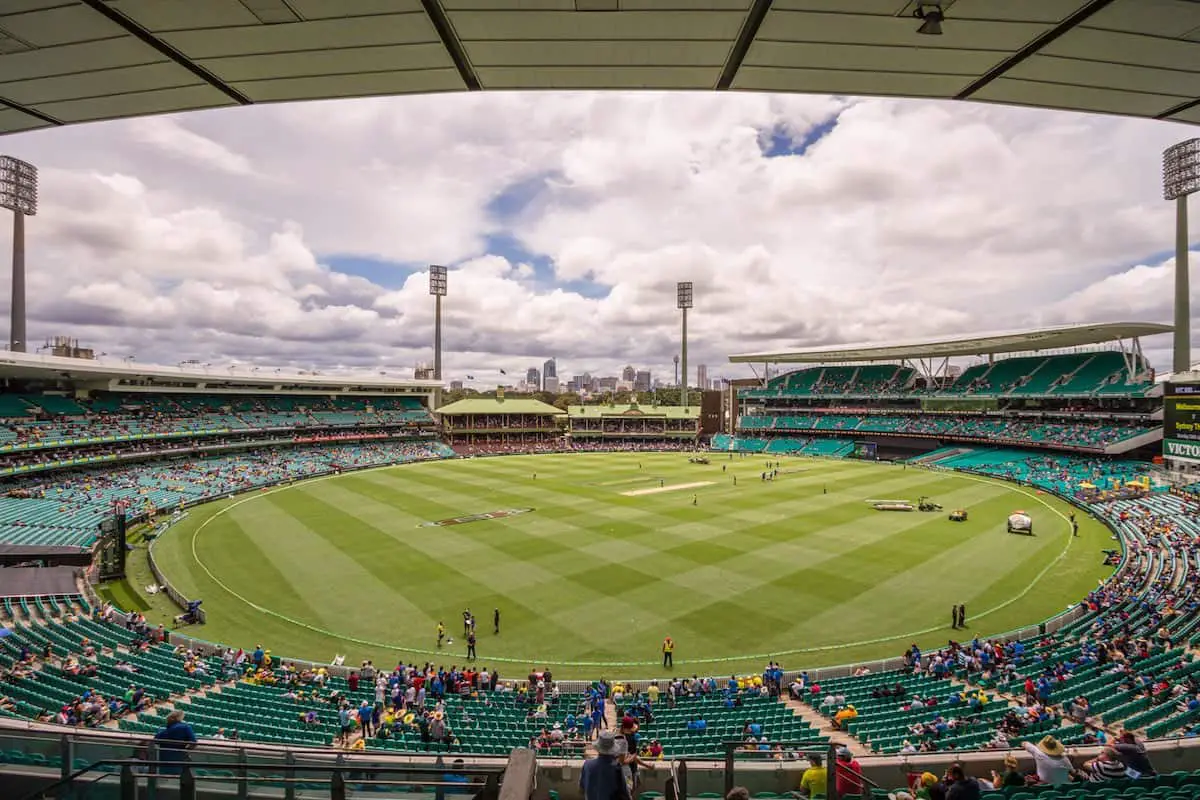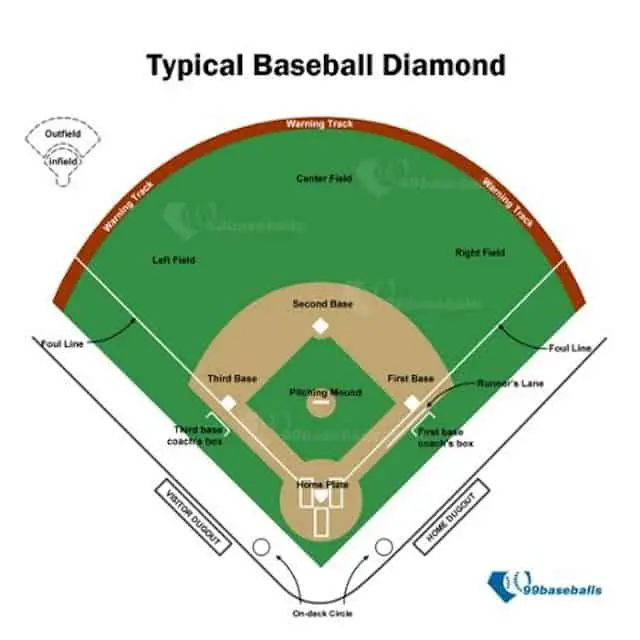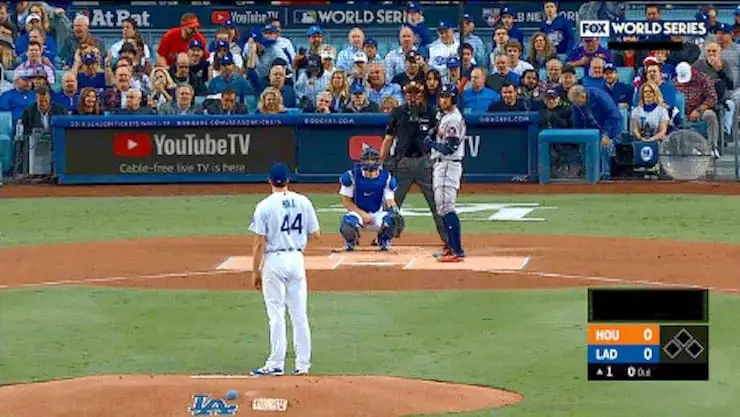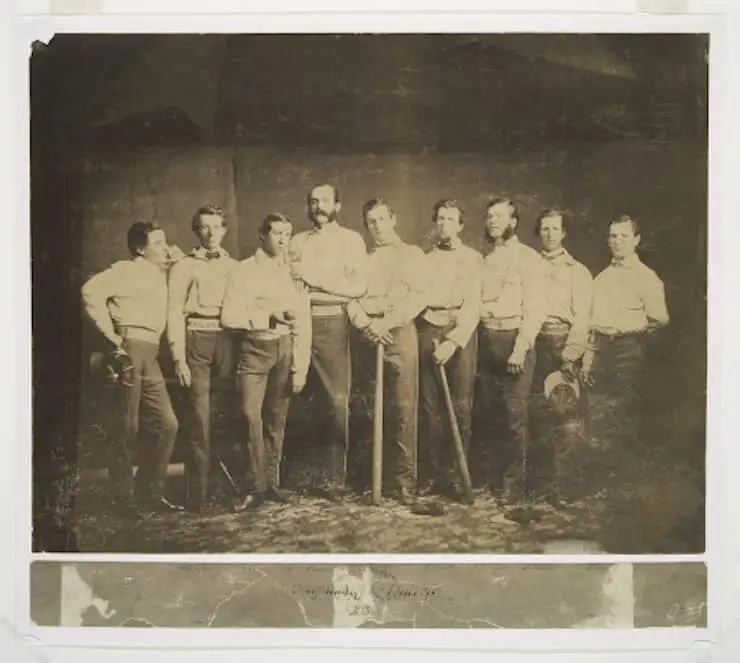Cricket and baseball have many differences, despite it being thought that they stem from the same origins. Over the years, however, the two have transformed into very different games founded on the classic battle between bat and ball.
The main difference between Cricket and Baseball is the orientation of the field. Also, in baseball, batters run around the bases, while in cricket they run between wickets. Other differences include different bat shapes and ball sizes, rules with regards to innings and different scoring systems.
In order to understand the differences between the two sports, however, you must understand their respective histories and how they manifest themselves in the sports we see today.
The Main Differences between Cricket and Baseball

The first main difference is the location of where the games are predominantly played. Cricket is played the world over, predominantly in the UK, Southern Asia, Australia and Africa.
Whereas baseball in played in many fewer locations, which include the USA, Japan and Cuba.
The second main difference is in the way teams score. In cricket, you score runs either by running the length of the ‘wicket’, or by hitting the ball beyond the boundary rope. While in baseball, while although similar in some regards, teams score by running around the bases or by hitting the ball beyond the designated fielding area. As mentioned, this is also relevant as it means that the layout of each playing field is different.
Another major difference between cricket and baseball is the layout and size of the field. In each case, the broad size of the fields is not dissimilar. However, baseball fields are generally shaped in a more triangular shape than the traditional cricket ‘oval’.

In cricket, the wicket lies in the centre of the field, and this is where the majority of action takes place. For example, this is where the batsmen stand, and the bowler runs in and bowls. However, in baseball, the field is situated so that the batter, standing on home-plate, is located at the apex of the triangular field.
There are then lines perpendicular to the plate which delineates the area behind which the ball will not be active.

The first and third bases are located along this line, some 90 feet along with it. These are then split by the second base, which sits directly opposite home. This is then also in line with the pitching mound. This is around 60 feet from home plate, and it is where the pitcher must stand when he throws the ball.
What are the Differences in How Players Bat?
The number of chances batsmen get to try and score, is different in each sport too. In cricket each batsman can face as many balls as they are able to (within the given length of the match) but once they are out, they are out for good.
The maximum number of times a cricket batsman can bat in a game is twice and this is only in the case of Test Matches with two innings for each side. For ODI and T20 matches, a batsman in Cricket in fact bats just once in a match.
Meanwhile, in Baseball, each batter can bat up to 9 times per game. This is because each team has 9 innings per game. Subsequently, within each innings, a team bats until the pitching side achieves three outs.
When they are batting, however, they will ultimately face fewer balls than a cricketer might. A baseball player might be ‘at bat’ for just a few minutes per game, while a cricketer might bat for more than 2 or 3 hours at a time.
The bats used in each sport also differ. In baseball the bats are tubular, being no more than 7cm in diameter at their thickest point, and no more than 106cm in length. Meanwhile, a cricket bat comprises of a much flatter face. This must be 10.8 cm wide and (including the handle) no more than 96.5cm long.
How are Cricket Balls and Baseballs Different?
The balls which the batsmen are trying to hit with their bats are also different. Although they are ostensibly made from similar materials, including cork, twine and leather, there are some important differences. Most notably, they have different weights and sizes.

Although a baseball is typically larger than a cricket ball, with a regulation circumference of 9 – 9.25 inches, compared to a cricket ball’s 8.81 – 9 inches; cricket balls are slightly heavier. They weigh between 5.5 and 5.75 ounces, compared to a baseball, which weighs just 5 to 5.25 ounces.
The balls are also put together differently. A cricket ball is made with a cork centre which is wrapped into hemispheres of leather and bound with twine. This twine forms the seam, which lies across the circumference of the ball.
Meanwhile, a baseball is made of a cork or rubber centre, which is wrapped in yarn. This is then covered in two peanut-shaped pieces of leather and bound with a thick thread.
The composition of the balls account, in part, for the differing styles with which players in each sport throw the ball. In cricket, bowlers have to throw the ball with a straight arm when they bowl.
The position of the seam is partly responsible for this, in that the straight up straight down seam allows the ball to swing when it is bowled a straight arm.
Meanwhile, a baseball pitcher can manipulate the flight of the ball through the air, not just side to side, but also up and down. This is possible when the pitcher throws the ball at certain speeds and orientates the seam in whichever given way.
What are the Differences in Scoring between Cricket and Baseball?
Finally, the ways in which the game is scored is very different. In cricket, every single run will count towards the total. This means that each time a batting pair are able to travel between the wickets while the ball is in play, they will score towards their total.
Meanwhile, in baseball, the batting team only scores when the batter rounds home plate. They get nothing for simply hitting the ball and making it to any of the other three bases if they don’t then go on to make it back to home plate.
What’s more, in both sports the scoring within each innings is described differently as it unfolds. In cricket, the score is simply portrayed in terms of the number of wickets that have fallen in relation to the number of runs scored. This might appear as 106-3 (106 runs for 3 wickets) or 271-4 (271 runs for 4 wickets).
You will also notice the number of overs which have been bowled so far in the given innings, and typically you will also see the individual scores of each batsman at that given moment. Occasionally, as below, you will also see the blower’s figures. Which, in this case, indicate that Morkel has bowled 7.4 over, conceded 60 runs and taken no wickets.

Meanwhile, in baseball, the score is displayed in two parts. There is the overall score, which is to say the number of runs each team has scored, compared to the opposition. For example, a match could be 4-2 or 8-1.
Although, there is also a score within the score and that is relating to the situation of that particular innings. This is a result of each side having a maximum of three outs per inning. Therefore, you will also notice a score relating to the number of strikes and balls thrown by a pitcher at each given batsman.
This is called ‘the count’ and is significant because, as mentioned, each batsman is only allowed 3 strikes. Similarly, the pitcher is only allowed 4 balls. Therefore, in the case that a pitcher has managed to strike-out the batsman, you might see a ‘count’ that appears as, 1-3.

Meanwhile, if a pitcher throws too many balls, it will appear as 4-2. This situation results in the batter being allowed to automatically advance to first base. This score then resets when the new batter arrives at the plate, as also happens should a batter strike-out.
You will also notice a number with an upward or downward pointing arrow next to it. This indicated which inning of the game is taking place. The arrow indicates whether it is the top or bottom of the inning. This is to differentiate between the first and second half of the inning.
Are there any Similarities between Baseball and Cricket?
Despite the many differences in the two sports, there are a number of similarities. To begin with, both are considered summer sports. In America, the professional baseball season runs from March until October. This is not dissimilar to the cricket season in the UK, which runs from April until September.
This is largely due to the fact that both sports are heavily dependent on the weather. In both cases, rain is regularly a reason for the interruption and prevention of play. Therefore, the sports are associated with long summer days; sat in the sun, drinking beer and enjoying a sporting spectacle.
To that end, the watching experience of both sports is – for the most part – relatively similar. Fans will often turn up to a cricket ground and expect to sit and watch several hours of play in one sitting.
Therefore, there is often a subdued and relaxed atmosphere associated with watching cricket, which comes in stark contrast to those experiences in sports where the action is more intense, such as football or rugby.
This is generally also the case for baseball. However, it is worth mentioning that in the shorter forms of cricket such as T20 and ODIs (and occasionally important Test Matches) cricket crowds can have a real party atmosphere.
Which is Harder: Cricket or Baseball?
This is a debate that has spanned the Atlantic Ocean for more than a hundred years, though it isn’t one that is particularly easy to settle. There are elements of each game which make it appear harder than the other, and the truth is that both sports require huge levels of skill to compete at the highest level.
The first point which many cricketers pick up on when it comes to this debate is the fact that baseball players wear their famous mitts when fielding.
Cricketers argue that having this essentially large pocket in which the ball can just fall into is a bit of a cop-out. Especially when a baseball is bigger and less heavy than a cricket ball, so is likely to cause less damage when it does make contact with your hands.
However, baseball players will counter this by arguing that baseball is in fact harder than cricket because the size and shape of the bat make it much more difficult to hit the ball than a cricket bat. After all, baseball pitchers throw just as fast as cricketers bowl (if not faster, in many cases) but batters must hit that ball with a bat that is a fraction of the width and which is spherical – meaning they’re much less likely to make a strong contact.
What Came First: Cricket or Baseball?

The origins of both sports are hard to pin down to a specific era or starting point. They are both developments on historic ball games which themselves evolved into versions similar to the games we know today, and which have then since evolved again into their modern variants seen and loved today.
It is possible to trace both of the sport’s origins to England. Versions of the sports which would go on to become Baseball were exported by some of the first pilgrims to the new world. William Bradford’s diary in the 1600s mentions English immigrants to America playing a game called ‘stool-ball’ one Christmas day.
Some histories of baseball even argue that cricket is a direct descendant of baseball. Cricket, after all, was being played officially in America by the 1820s. Meanwhile, the first officially recorded baseball game in America came in 1845. This was the same year when rules began to be codified by individual baseball clubs.
That said, cricket has a justifiable claim to officially being an older sport than baseball, as rules were first codified in 1744. These first written rules were drafted by the London Cricket Club and included players hitting a ball with a bat, defending a wicket and bowling in ‘overs’, with each team batting for an innings.
That said, cricket only turned professional in the UK in 1962. While in America, teams had been operating in fully professional leagues as far back as the sport’s official inception in the 1860s.
Are Baseball Players Good at Cricket?
There are an increasing number of examples of baseball players who have attempted to transition to cricket playing career. One of the most high-profile examples of this is Boomer Collins, the former Toronto Blue Jays player. He trained for several months, including a stint in India, and eventually put himself forward for the Caribbean Premier League draft.
Although he was unsuccessful, video footage of his training shows that he was an adept cricket batsman. After all, the skillsets used in both sports are ultimately very similar. You need to be able to throw accurately, catch and hit a ball with a bat. In both sports, it also helps to be quick and generally athletic.
Meanwhile, Mike Young, an American former baseball player was hired as the Australian national cricket team’s fielding coach between 2000-2005 and now works in India as the coach of IPL side, Kings XI Punjab.
Unfortunately, there aren’t many examples of cricketers switching over to baseball. However, there have been a few times when professional cricketers have tried their hand at baseball. England cricketers Jos Butler and Alex Hales trained with the Boston Red Sox and the LA Dodgers when they played an MLB game in London in 2017.
Is Cricket More Dangerous than Baseball?

There are a number of factors that make certain aspects of cricket more dangerous than baseball. For example, the fact that only the wicket keeper wears gloves to catch the ball means that cricket players are much more susceptible to dangerous impacts with the ball on their hands when fielding.
Cricketers also field closer into the batsman than their baseball playing counterparts. There are a number of positions in cricket, such as ‘silly-mid-off’, where players stand as close to the batsman as the wicketkeeper.
There has only ever been one death as a result of an injury sustained on a professional baseball field. That was Ray Chapman who died after being struck with a pitch to the head in 1920. This incident began the campaign for helmets to become mandatory when batting, which came into effect 30 years later.
Meanwhile, since 1900 four professional cricketers have died after being struck with a ball. Including the 2018 incident where Australian batsman Phillip Hughes was struck in the back of the head whilst batting.
Thankfully, both sports have taken significant measures to limit the chances of injury when playing, and as technology and sports science continue to develop and be applied to the sports in more depth, the likelihood of injury of any kind will continue to be reduced.
